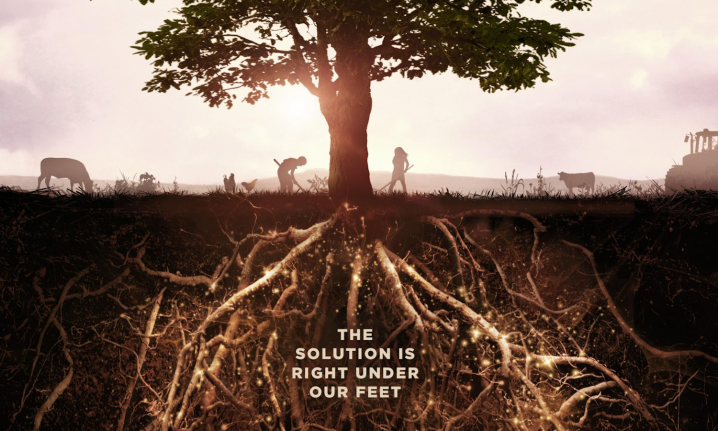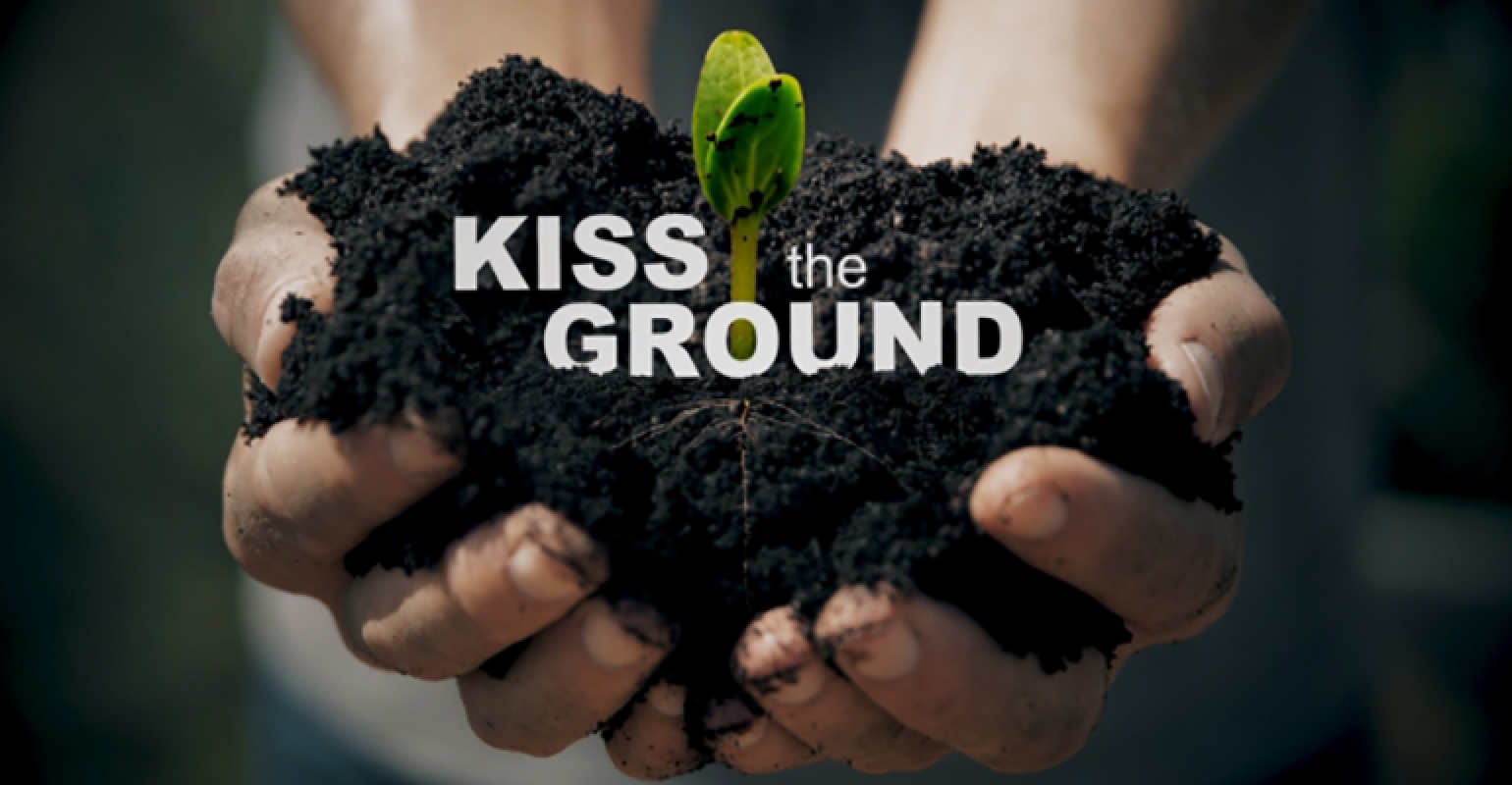SMALL SCREEN
This weekend we’re watching: How to save the world with dirt

‘Kiss the Ground’ is an unconventionally convincing envirodoccie, narrated by the cool, friendly, Texan twang of Woody Harrelson, which suggests a new practical approach to saving the world — and it’s right under your feet.
Kiss the Ground
Our current path is unsustainable, much damage has already been done, but it’s still not too late if we’re willing to get our act together. That is the simple go-to, take-home message of most environmental documentaries. In the recent Netflix biopic David Attenborough: A Life on Our Planet, poor old Attenborough practically begs the viewer to take up this mantle, and one gets the sense that, after a lifetime spent marvelling at the glory of the natural world, he genuinely cannot understand why people don’t get it by now.
Kiss the Ground takes a more pragmatic approach. First off, rather than being narrated by a world-famous expert naturalist, it’s voiced with the cool, friendly, Texan twang of Woody Harrelson. The other way in which it’s an unconventional environmental documentary is that it starts like this:
“There’s so much bad news about our planet, it’s overwhelming. The truth is, I’ve given up. And the odds are, so have you.”
What if there is another way to save the world, and it’s as old as dirt.
Harrelson doesn’t preach or guilt-trip, he comes to you as an equal, freely admitting his flaws. Many people are desensitised to the truth, and the frustration which environmental advocates like Attenborough are all too familiar with is that pointing out that people are part of the problem usually does little to motivate them to change.
So, rather than rebuke like a disappointed teacher, he opts for the angle of positive reinforcement. Kiss the Ground is atypically uplifting for a documentary on the climate crisis. It’s full of optimism, solutions and practical suggestions about how you can be part of those solutions. Harrelson explains concepts casually in layperson’s terms, the way your buddy might explain them to you when you’re just hanging out.
The most simplified version of Harrelson’s pitch is this: What if there is another way to save the world, and it’s as old as dirt.
Healthy soil has the unique ability to sequester large quantities of carbon dioxide out of the atmosphere through plants. Rather than pin all our hopes on technologies to reduce CO2 emissions (many of which do not exist yet), why not take advantage of the “technology” built into the very ground beneath our feet?
Even if we completely stopped producing CO2 today, the Earth’s climate would still continue to warm up for many years, because of the carbon we have already released into the atmosphere, our legacy load, which amounts to about a thousand billion tons. Reducing emissions is not enough.
As the great HG Wells conveyed in The War of the Worlds, it is not truly humanity who presides over earth, but microbes.
The only solution is Drawdown – a year-to-year reduction in CO2 in the atmosphere, and the easiest way to achieve that is through changing agricultural practices regarding soil.

‘Kiss the Ground’ (Image supplied)
At the beginning of the film, we meet Ray Archuleta, a conservation agronomist from the National Resources Conservation Service, who tours the US educating farmers on the basic ecological principles and biology of soil. Don’t you mean chemistry? Nope. The two fields are intertwined so technically we’re talking about biochemistry, but the important point is that healthy soil is alive.
“In every handful of healthy soil, there are more organisms than the number of people who have ever lived on planet Earth.” As the great HG Wells conveyed in The War of the Worlds, it is not truly humanity who presides over Earth, but microbes. The affairs of our planet are governed by an invisible world, the world of the very very small, so it is easy to forget how crucial microbes are to our lives.
You have more bacterial cells in your body than you have human cells and when you eat it is the bacteria in your gut that actually consume the food. What you consume is the by-product of their consumption, and without them you could not absorb the nutrients you need. The micro-organisms in the soil are to plants what the micro-organisms in our gut are to us. Crucial. And yet we decimate them daily during “normal” farming processes with chemical sprays and tilling.
Soil which is sprayed with toxic chemicals for conventional agriculture is almost completely devoid of micro-organisms. In Kiss the Ground, Harrelson will run you through the disturbing origin of the pesticide, which has its routes in chemical warfare.
And then there’s rapid erosion, the result of industrial-scale ploughing. The purpose of ploughing is to break the soil in order to sow seeds – it’s a low-tech method which has been used for thousands of years and, in America in the 1930s, it also caused the largest human-made environmental disaster in history – the Dust Bowl.
The more tilling gets done, the weaker the soil gets and the more farmers feel compelled to use chemical sprays. This is the vicious cycle of industrial agriculture and it has cascading effects on our health and the health of the planet.
Healthy soil absorbs carbon, but tilling soil releases it. It may seem strange that farming vast fields of plants could land up increasing the quantity of carbon in the atmosphere by drying out the soil and turning it into dust – the process known as desertification. We are farming a desolate world. The good news is that we know exactly what to do to break this cycle.
A sustainable future for our climate means a move away from monoculture towards regenerative permaculture. It means food forests, organic local small-scale farming, and the merging of the livestock and agricultural industries.
Other than the practical challenge of making the switch from industrial agriculture, there are no significant downsides to these systems. It’s better for the climate, better for the ecology of the land it’s practised on, saves water, is better for the consumer, better for job creation, and actually grows more food per acre than industrial farming. Because food forests are ecologically diverse, they’re even safer for farmers financially, because the failure of a single crop only represents a portion of their potential profits.
But alas, it’s not as effective at allowing industrial farming moguls to make large profits fast, so agricultural producers aren’t likely to make the change voluntarily. The change has to come from governments and the consumer.
In the long term, buying food from local, regenerative food sources might be the most important contribution an individual can make towards healing our climate.
Even livestock farming can be good for the planet in non-industrial settings. Global veganism is not necessarily the best answer to the climate crisis, as the zeitgeist of ecological activism has suggested until recently. Cows, which are currently a large source of emissions, actually promote the sequestering of carbon into the earth when farmed in free-roaming grazing situations rather than depressing industrial wastelands. In fact, using livestock to help regenerate land and reverse desertification (the gradual transformation of our planet into a desert) is realistically scalable to most of the earth and might even be our best bet at making the shift towards sustainable food production, because it’s inexpensive.
Ultimately, Kiss the Ground’s frenzied optimism concludes like any other envirodoccie, with schmaltzy upbeat monologues that “we can do it together!”
So what. It has earned it, by doing what similar films so often fail to do – providing a good reason to be hopeful about the future, and a basic toolkit of how you can contribute in a realistic way towards a better one. DM/ML
Kiss the Ground is available on Netflix.
You can contact This Weekend We’re Watching via [email protected].

















 Become an Insider
Become an Insider
“You have more bacterial cells in your body than you have human cells and when you eat it is the bacteria in your gut that actually consume the food. ” Correct Here is a balanced article on this claim. https://www.sciencealert.com/how-many-bacteria-cells-outnumber-human-cells-microbiome-science
Here is a brief overview of carbon capture and storage methods. 6 Ways to Remove Carbon Pollution from the Sky on https://www.wri.org/blog/2020/06/6-ways-remove-carbon-pollution-sky
Great review ! Have watched it and came away wondering how each of us can contribute to the change … summed up in the review : “ But alas, it’s not as effective at allowing industrial farming moguls to make large profits fast, so agricultural producers aren’t likely to make the change voluntarily. The change has to come from governments and the consumer.
In the long term, buying food from local, regenerative food sources might be the most important contribution an individual can make towards healing our climate.”